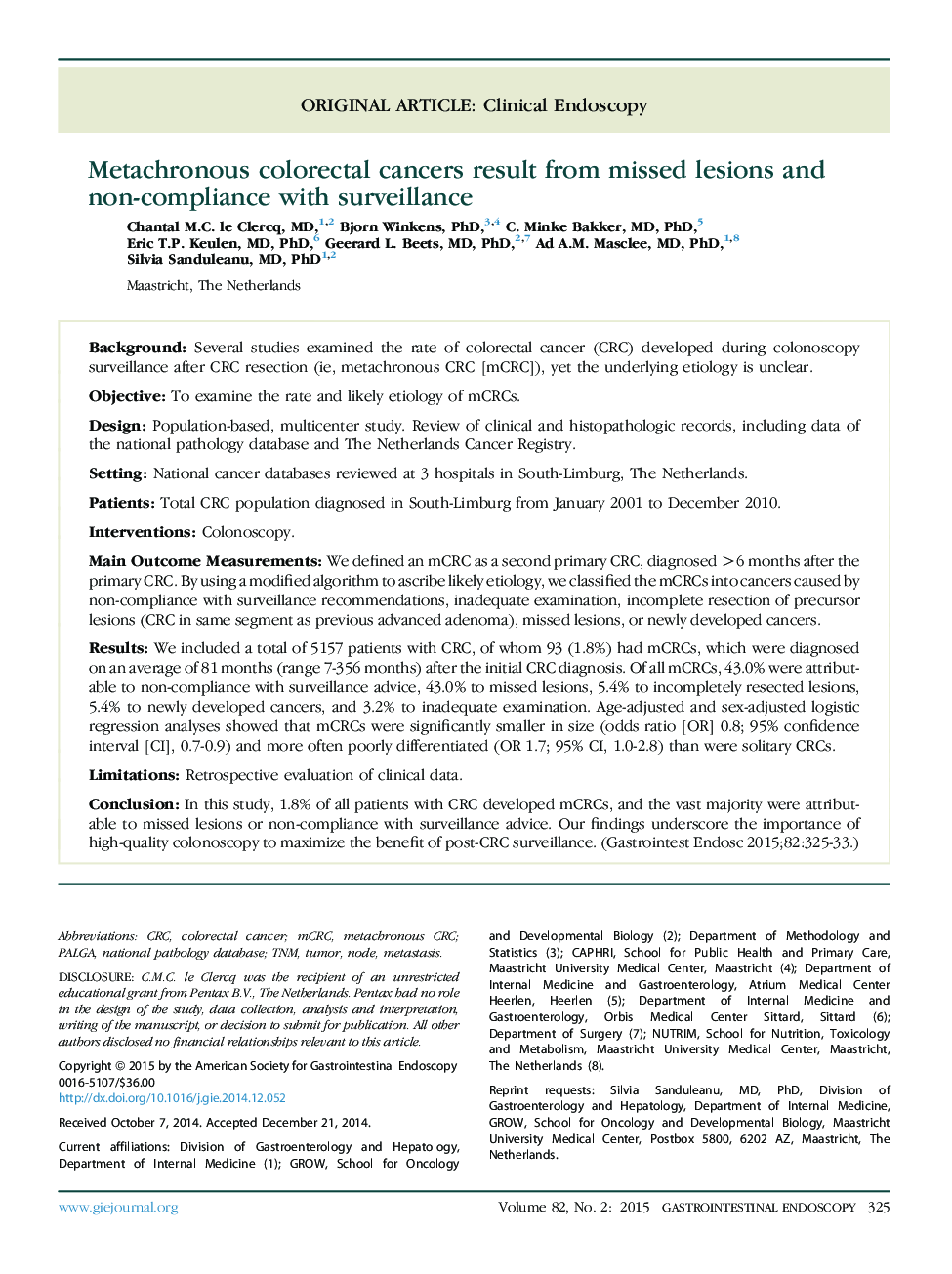| کد مقاله | کد نشریه | سال انتشار | مقاله انگلیسی | نسخه تمام متن |
|---|---|---|---|---|
| 6097722 | 1210292 | 2015 | 11 صفحه PDF | دانلود رایگان |

BackgroundSeveral studies examined the rate of colorectal cancer (CRC) developed during colonoscopy surveillance after CRC resection (ie, metachronous CRC [mCRC]), yet the underlying etiology is unclear.ObjectiveTo examine the rate and likely etiology of mCRCs.DesignPopulation-based, multicenter study. Review of clinical and histopathologic records, including data of the national pathology database and The Netherlands Cancer Registry.SettingNational cancer databases reviewed at 3 hospitals in South-Limburg, The Netherlands.PatientsTotal CRC population diagnosed in South-Limburg from January 2001 to December 2010.InterventionsColonoscopy.Main Outcome MeasurementsWe defined an mCRC as a second primary CRC, diagnosed >6 months after the primary CRC. By using a modified algorithm to ascribe likely etiology, we classified the mCRCs into cancers caused by non-compliance with surveillance recommendations, inadequate examination, incomplete resection of precursor lesions (CRC in same segment as previous advanced adenoma), missed lesions, or newly developed cancers.ResultsWe included a total of 5157 patients with CRC, of whom 93 (1.8%) had mCRCs, which were diagnosed on an average of 81 months (range 7-356 months) after the initial CRC diagnosis. Of all mCRCs, 43.0% were attributable to non-compliance with surveillance advice, 43.0% to missed lesions, 5.4% to incompletely resected lesions, 5.4% to newly developed cancers, and 3.2% to inadequate examination. Age-adjusted and sex-adjusted logistic regression analyses showed that mCRCs were significantly smaller in size (odds ratio [OR] 0.8; 95% confidence interval [CI], 0.7-0.9) and more often poorly differentiated (OR 1.7; 95% CI, 1.0-2.8) than were solitary CRCs.LimitationsRetrospective evaluation of clinical data.ConclusionIn this study, 1.8% of all patients with CRC developed mCRCs, and the vast majority were attributable to missed lesions or non-compliance with surveillance advice. Our findings underscore the importance of high-quality colonoscopy to maximize the benefit of post-CRC surveillance.
Journal: Gastrointestinal Endoscopy - Volume 82, Issue 2, August 2015, Pages 325-333.e2